

Alborz Fallah
Australia’s road toll climbs despite record speeding fines
7 Hours Ago
The Hyundai Sonata N Line is one of the more interesting mid-sized models on sale, with a punchy turbocharged engine and sleek styling.



News Editor

News Editor


News Editor

News Editor
Quickly see how this car stacks up against its competition. Select any benchmark to see more details.
Where expert car reviews meet expert car buying – CarExpert gives you trusted advice, personalised service and real savings on your next new car.
Sedans aren’t dead yet, but their vital signs are getting weaker.
The popularity of sedans, particularly mid-sized ones, continues to dive in Australia. Even in markets like the US and China, which still buy them in enormous numbers, their natural predator – the SUV – is threatening to squeeze them out.
Faced with the threat of the sedan’s extinction, car companies have decided to change the formula. Case in point: the Hyundai Sonata.
There has never been a sleeker, more coupe-like Sonata than this current, eighth generation. The only one that comes close was the sixth generation, sold here as the i45.
Hyundai appears to have figured that to get people to still buy sedans, it has to give them some sex appeal. But it’s also taken a gamble here – if buyers are shifting to more practical SUVs in droves, is it logical to make its mid-sized sedan even less practical?
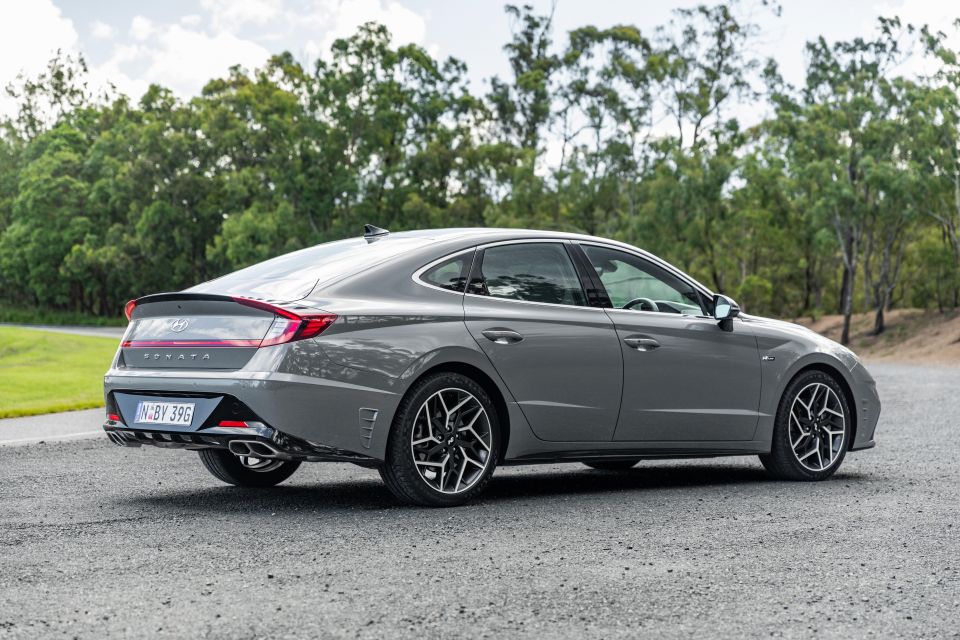
The Sonata has also had an unusual track record. Hyundai has once in a while released a more daringly styled generation – the ovoid third generation, for example, or the aforementioned i45 – only to have to backtrack.
The i45 was popular in the US, but it faced blowback from more conservative Asian buyers. Likewise, reports out of Korea suggest the current Sonata – traditionally one of the best-selling vehicles in that market – has seen a drop in popularity, and its redesign has reportedly been pushed up. Should we expect a return to a boring-looking Sonata with the next generation?
The current Sonata arrived in Australia almost two years later than originally planned, launching in mid-2021.
The range was supposed to also include naturally-aspirated 2.5-litre and turbocharged 1.6-litre four-cylinder petrol engines, but Hyundai Australia later opted to bring just one model: the fully-loaded N Line, with its turbocharged 2.5-litre four-cylinder engine.
Despite being a niche model within an increasingly niche segment, the Sonata is arguably performing well. To the end of February, Hyundai has sold 187 Sonatas this year. That puts it just behind the much wider Mazda 6 range (209) and ahead of the Skoda Octavia (177) and Volkswagen Passat (106).

The Sonata N Line is priced at $51,565 before on-road costs, or $56,266 drive-away based on a Sydney postcode.
The only option is premium paint at $595. Ours was finished in the attractive Hampton Grey, but you can also choose from the darker Nocturne Grey, Midnight Black, or deep Oxford Blue. White Cream is the standard paint finish, while sadly the gorgeous Flame Red appears to have been withdrawn.
There’s not a massive amount of competition when it comes to performance-oriented mid-sizers from mainstream brands. The turbocharged 2.5-litre Mazda 6 Atenza and Skoda Octavia RS ‘sedan’ (actually a liftback) are the most obvious competitors, priced at $50,490 before on-roads and $54,990 drive-away, respectively.
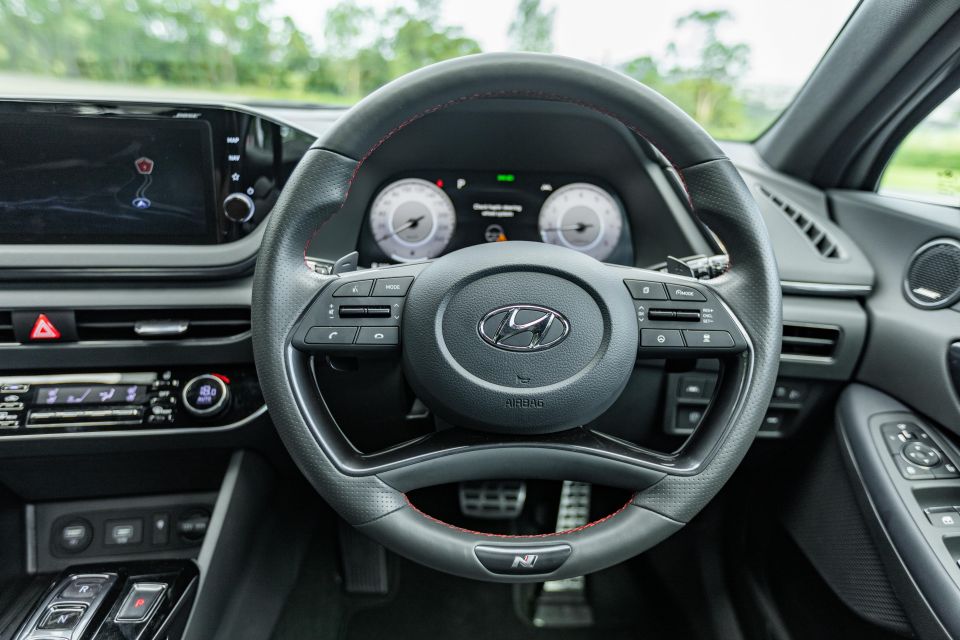
Even the cheapest Volkswagen Arteon is around $10,000 more before on-roads, and a Peugeot 508 commands a similar premium. Base luxury-brand sedans like the Audi A4 and Volvo S60 are also above the $60,000 mark.
The elephant in the room is the rear-wheel drive Stinger from sister brand Kia. To get a four-cylinder Stinger equipped to this level, you’re looking at $58,930 before on-road costs.
Pass up on some of the fruit, and you can get a twin-turbo V6 Stinger 330S for $55,030 before on-roads, or $59,030 drive-away. That’s very tempting, and you can justify it to yourself by saying it’s a more practical car – it is a hatchback, after all.
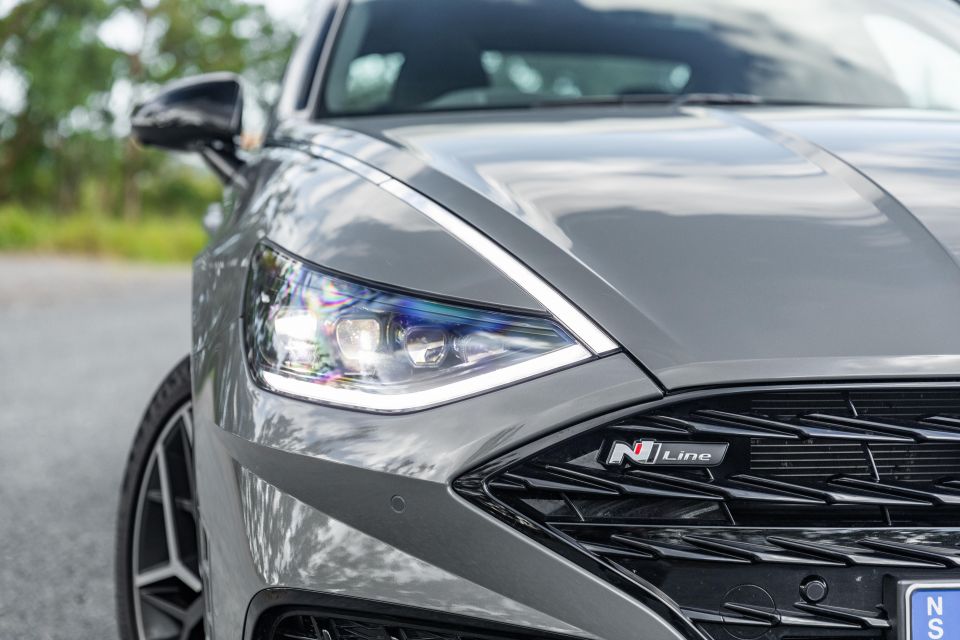
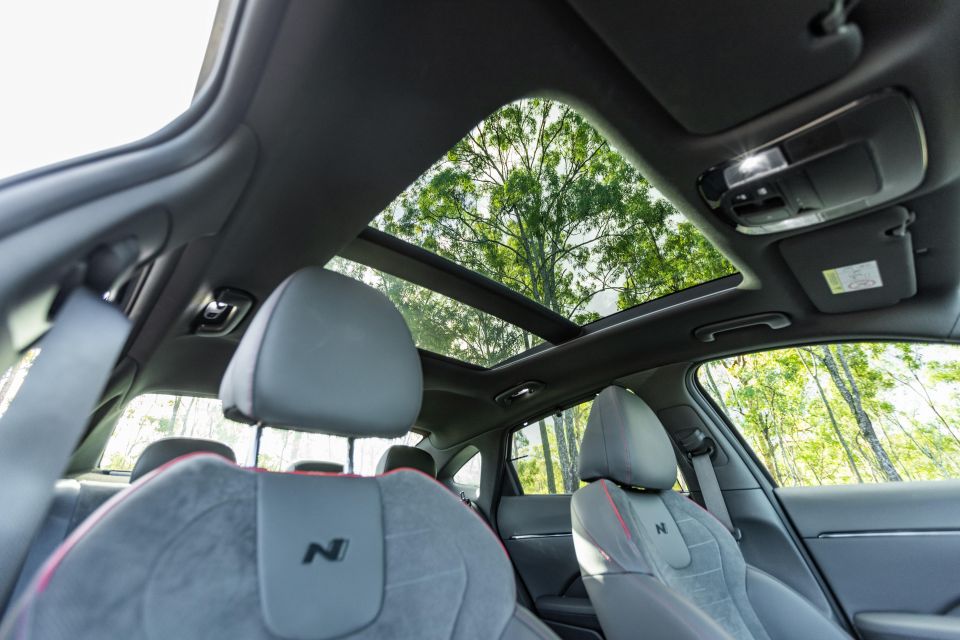
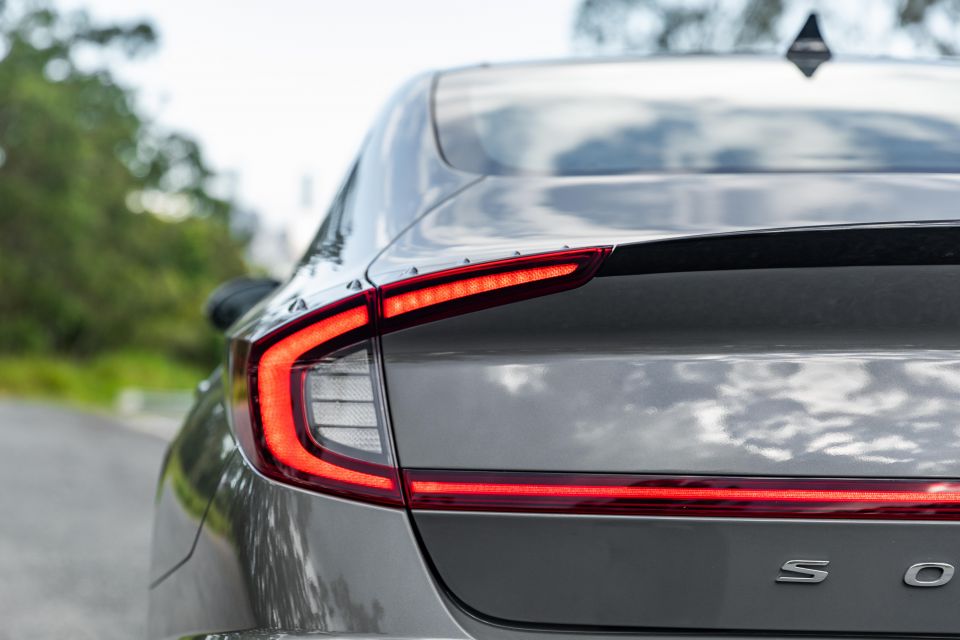
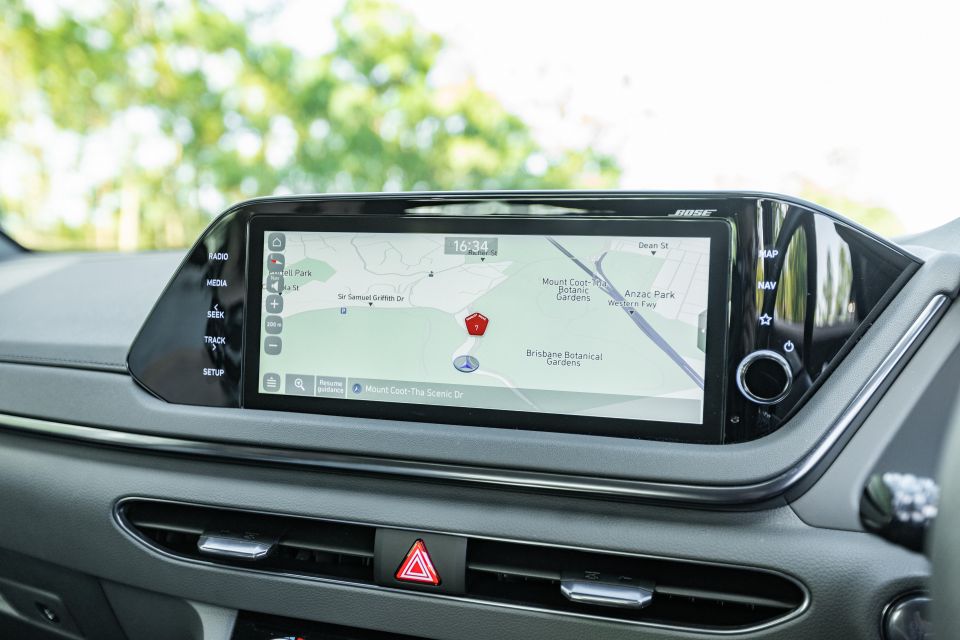
Buy your new car without the stress. It's fast, simple and completely free.

Great service from Travis and team, second time I have used this business would not hesitate to recommend them to anyone
Craig C.
Purchased a Ford Ranger in Sunshine Coast, QLD
CarExpert helped Craig save $7,224 on his Ford Ranger, now let us save you on your next new car.
Get your BEST priceOne feature missing from the Sonata is Hyundai’s clever new Remote Smart Parking Assist that allows you to move the car back and forth using the key fob.
It’s an unusual omission as it’s offered in markets like the US, and the Sonata was the first core Hyundai model to receive it – remember the Superbowl commercial about “smaht pahk” with Chris Evans?
You also won’t find adaptive suspension, like you can add to an Octavia RS, and there’s no ambient lighting or remote start, either.
Otherwise, the Sonata N Line gets essentially everything you’d expect from a top-spec Hyundai.
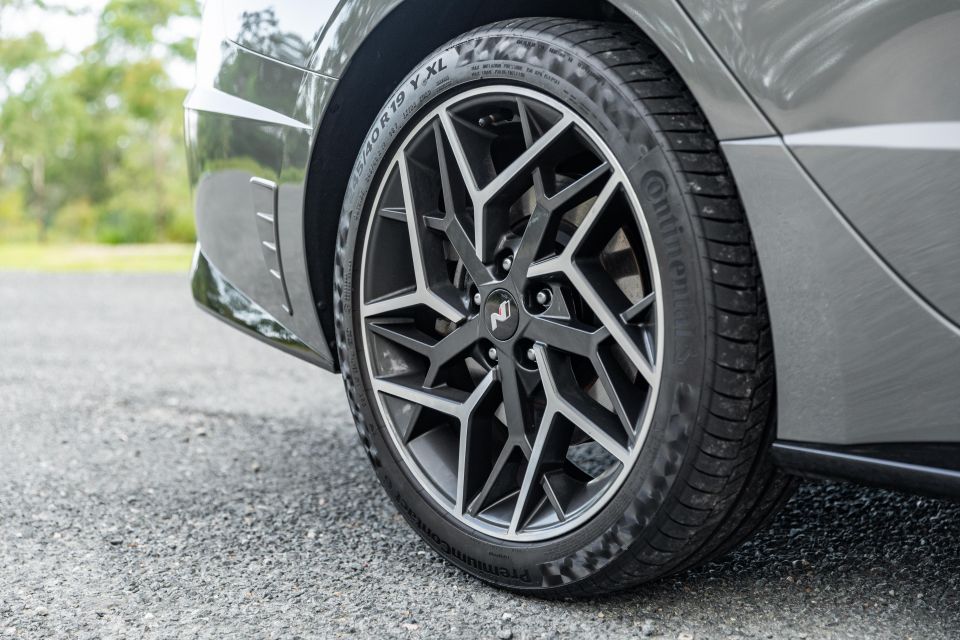
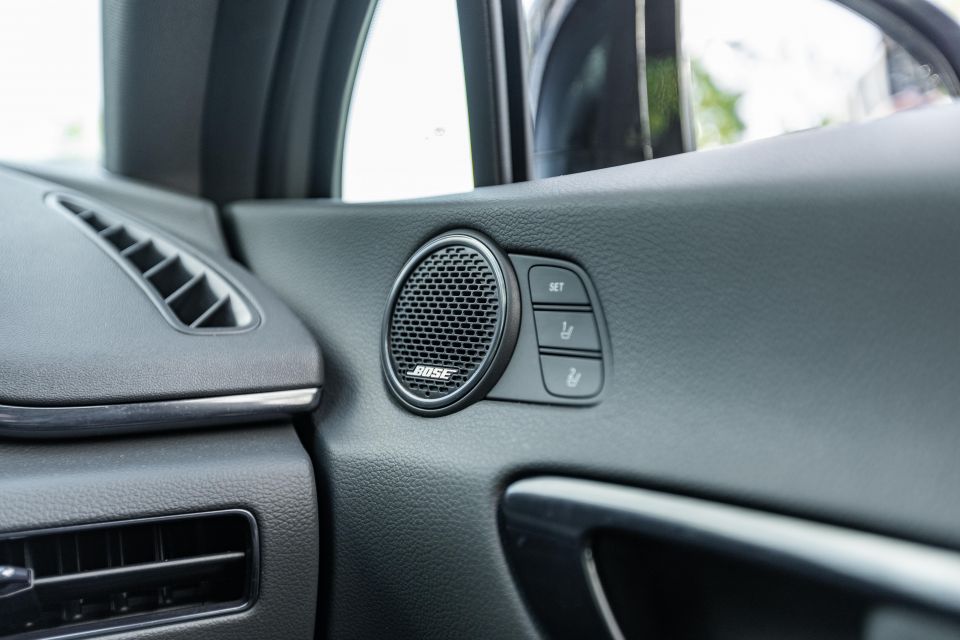
Sonata N Line highlights:
Features like a head-up display and heated seats are optional on the Octavia RS. The Mazda 6 Atenza gets in a win with adaptive LED headlights, but it has only a single-pane sunroof, a part-digital instrument cluster, and an 8.0-inch infotainment screen.

The current Sonata hasn’t been tested by ANCAP, which also can’t rely on Euro NCAP testing for its rating as the Sonata isn’t sold there.
However, it’s worth noting the Sonata received a Top Safety Pick designation by the Insurance Institute for Highway Safety (IIHS) in the US and received ‘Good’ ratings for every aspect of crash performance.
While there’s no ANCAP rating available, the Sonata does offer a comprehensive suite of safety equipment:
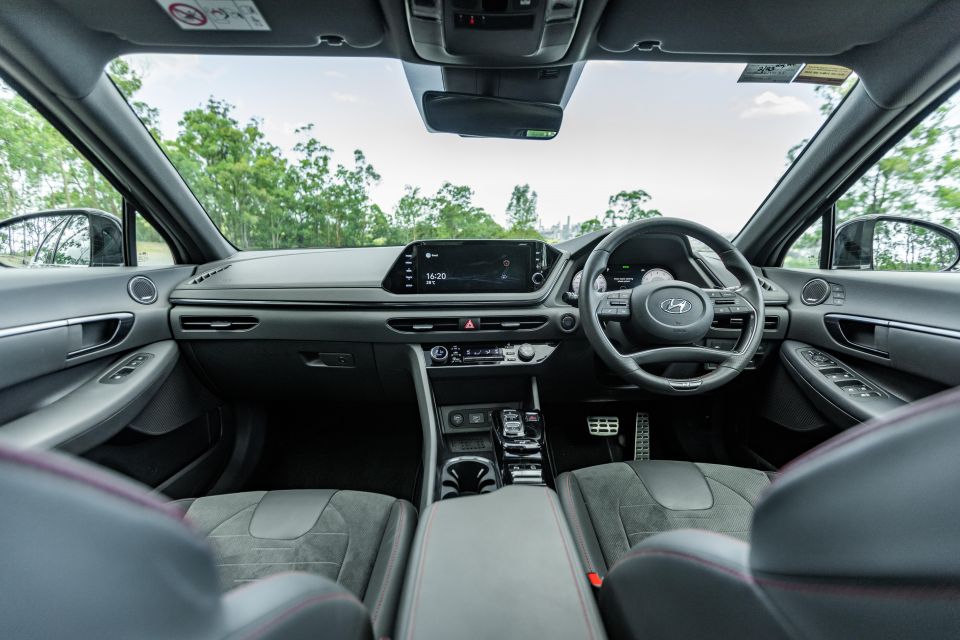
The Sonata’s interior isn’t as daring as its exterior, but it’s attractive. What a pity then, the dashing lines of the exterior restrict space in the interior.
Headroom is most affected. I’m 180cm tall, and I was surprised to find that even with the driver’s seat in the lowest setting my hair was touching the roof.
Watch your head stepping into the rear. Once you’re seated on the comfortable bench, you’ll find adequate headroom for the outboard seats for someone of my height, but the middle seat is a write-off. There’s still a drivetrain hump to contend with, while the raised seat means my head was pressed firmly against the roof. Ouch.
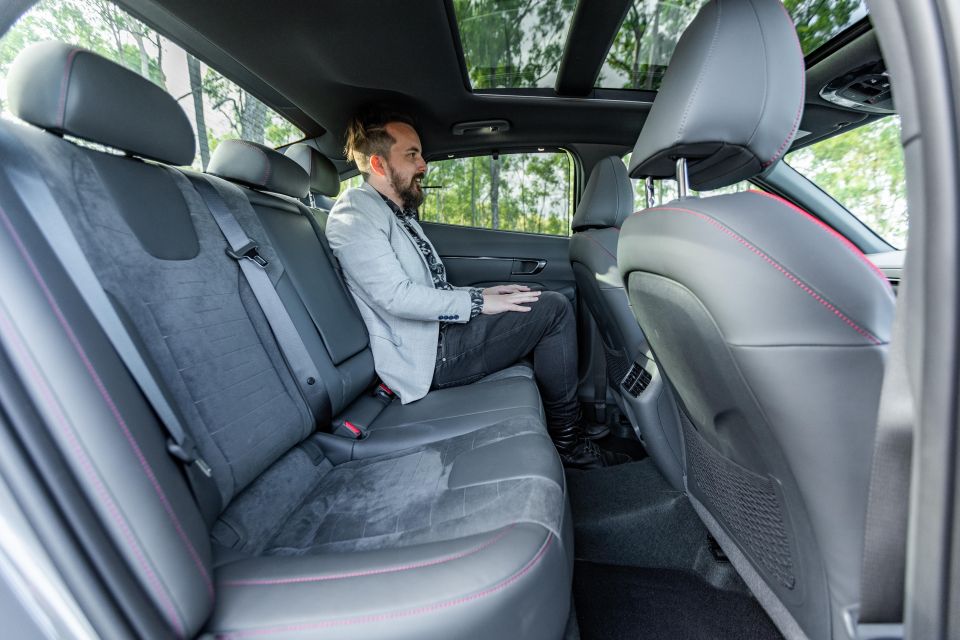
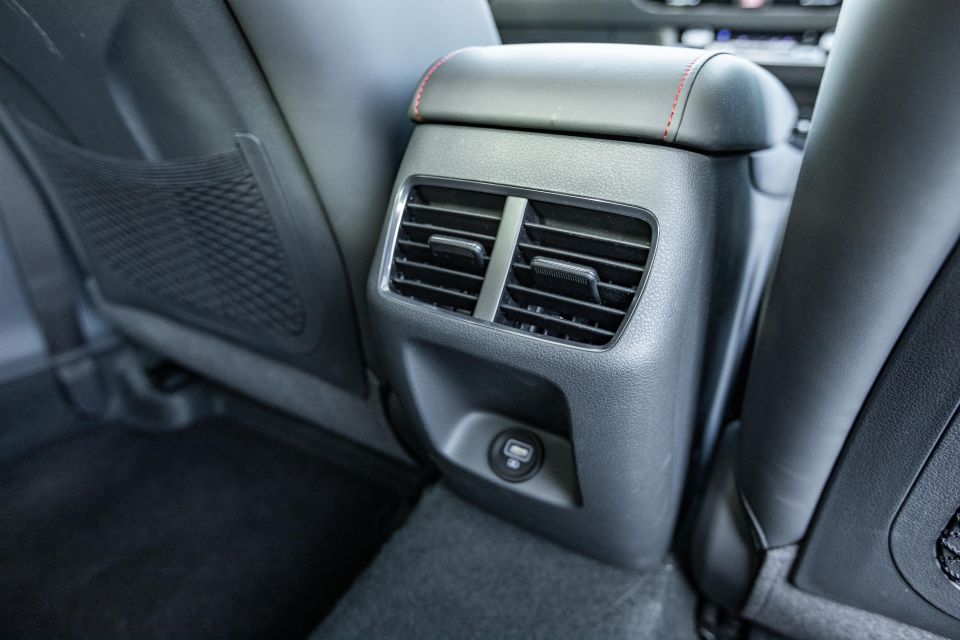
The numbers don’t lie. While the Sonata is 35mm wider than an i30 Sedan, there’s only 13mm of extra rear shoulder room and only 3mm more headroom according to Hyundai’s own figures.
Surprisingly, the Sonata actually has less rear legroom: 885mm against 964mm.
The last time Hyundai gave the Sonata such a rakish roofline (the i45), it didn’t impinge on headroom this much.
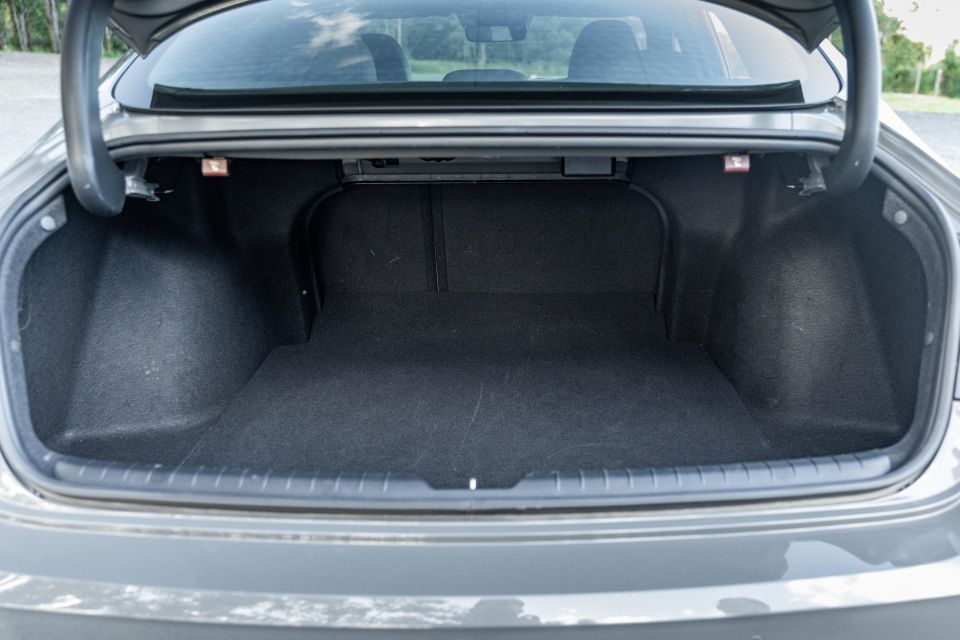

Rear seat occupants get air vents and a single USB-A outlet, plus a fold-down rear armrest with cupholders and bottle holders in the doors that’ll fit a 1L bottle. There are also three top-tether and two ISOFIX child seat anchor points.
Boot space is slightly better than the i30 Sedan at 510L, versus 474L. The Mazda 6 sedan’s boot also measures 474L. But the likes of the Stinger and Octavia are more practical still for bulky loads, given they have a rear hatch.
You can open the boot with the key fob, a button inside the car, or rely on the hands-free functionality. But if you’re confused as to how to physically open it, it’s easy to miss: you press within the Hyundai logo.
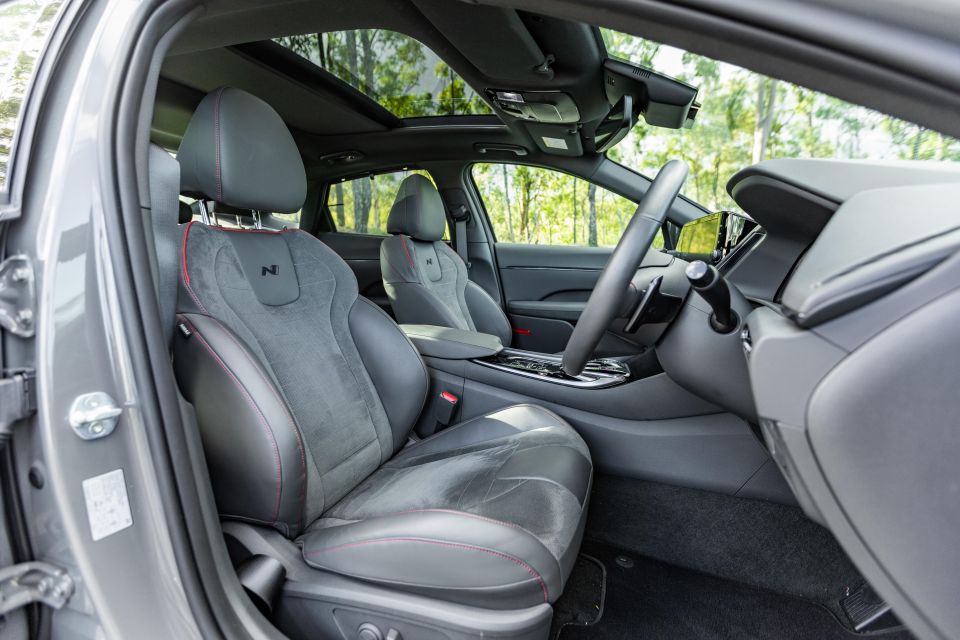
Setting aside the Sonata’s space and versatility, its interior is pleasant.
While the lower half of the dash is still finished in harder plastics, the materials used appear a solid step up from those in the i30 Sedan.
The dashboard is more conventional than that of its smaller sibling, but also features a minimalist centre stack. The 10.25-inch touchscreen is situated high on the dash without looking like a tablet-style afterthought, while below it sits a bank of physical climate controls.
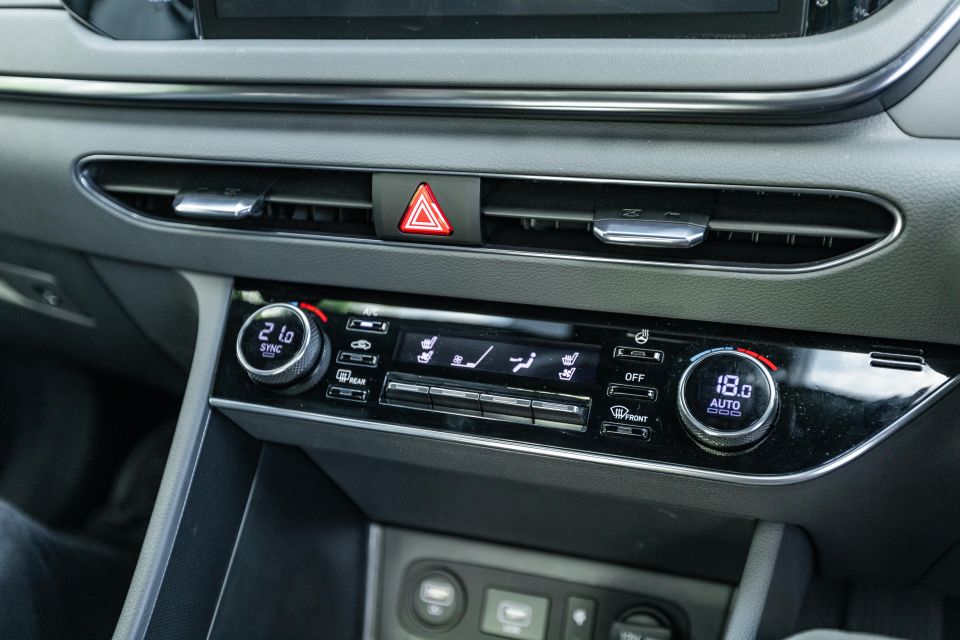
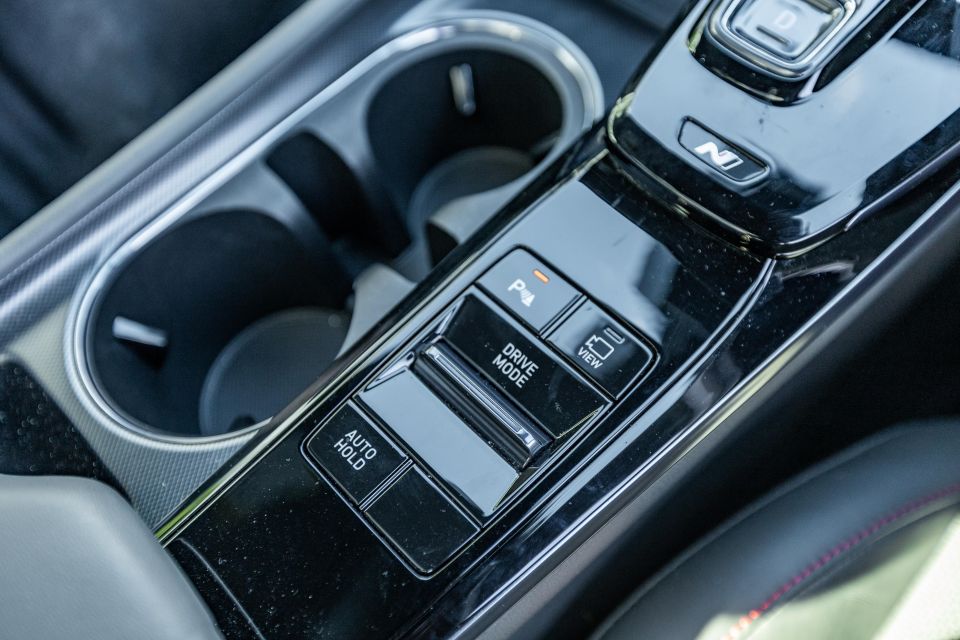
There’s some touch-capacitive switchgear in the Sonata but Hyundai hasn’t gone overboard like they did with the Tucson. It’s all tactile and intuitive, including the rocker switches for the seat ventilation controls – flick them up to make the seats hotter, down to make them colder.
At the base of the centre stack, you’ll find a wireless charging pad, a 12V outlet and two USB-A outlets.
The dark grey colourway of the interior is a refreshing change from the usual black, while the front seats are superb. The Alcantara and Nappa leather seats are grippy, comfortable and supportive and boast heating and ventilation up front and heating for the outboard rear seats.
Unusually, the driver’s door armrest is blue, while every other armrest in the car is grey. When a design choice looks like poor quality control, it’s not a wise design choice.
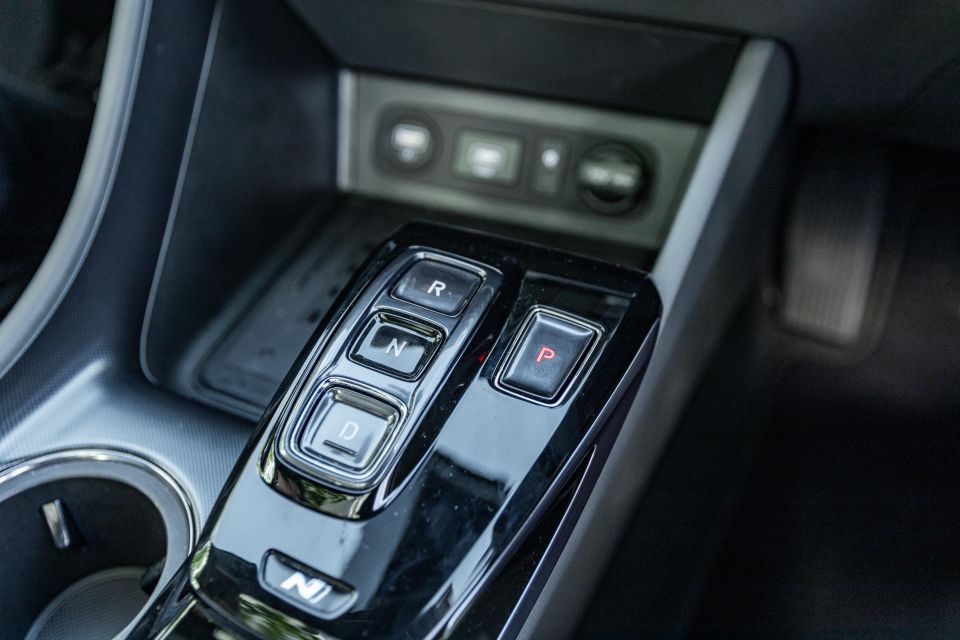
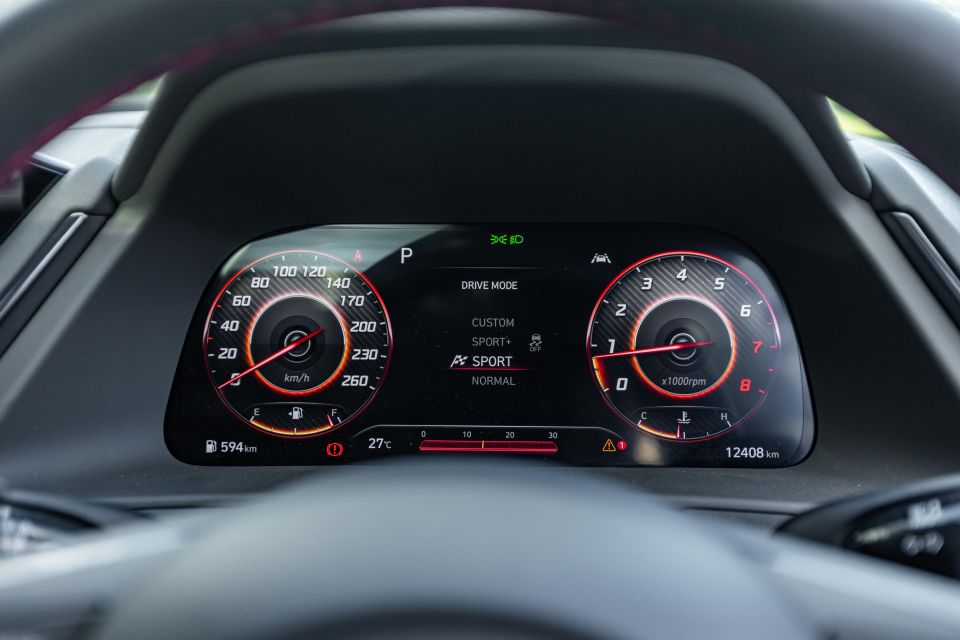
There are some other puzzling design choices. The push-button gear selector is straight out of up-spec Tucson and Santa Fe models and isn’t remotely sporty, nor does it really free up much space. It also simply isn’t as intuitive as an honest-to-goodness shifter you can grab.
The leather-wrapped steering wheel is another part borrowed from the Tucson and, while it feels good in your hands, it’s another item ill at ease with the Sonata’s sporting pretensions.
The use of piano black trim on the centre console is eminently frustrating, while the gloss black touch-capacitive switches flanking the touchscreen look nice – particularly how they sit on a curved piece of trim – but lack haptic feedback.
The soft-touch top of the dash and doors is welcome, but the use of hard plastic for the instrument binnacle is disappointing; the doors also have a small recess with hard, scratchy plastic. We’d also like to see some soft plastic or leatherette on the sides of the centre console.


Where expert car reviews meet expert car buying – CarExpert gives you trusted advice, personalised service and real savings on your next new car.
The lack of full-screen Android Auto on Hyundais with the 10.25-inch screen also continues to grate, though the infotainment system is otherwise impressive with its neat graphics and quick response times.
We also like how vehicle settings are easily accessible via the touchscreen, instead of being configurable via the instrument cluster.
The digital instrument cluster mightn’t have viewable maps like in the Octavia, but it’s attractive and legible. There’s also a terrific head-up display that includes information like the speed limit plus whether a vehicle is in your blind spot.
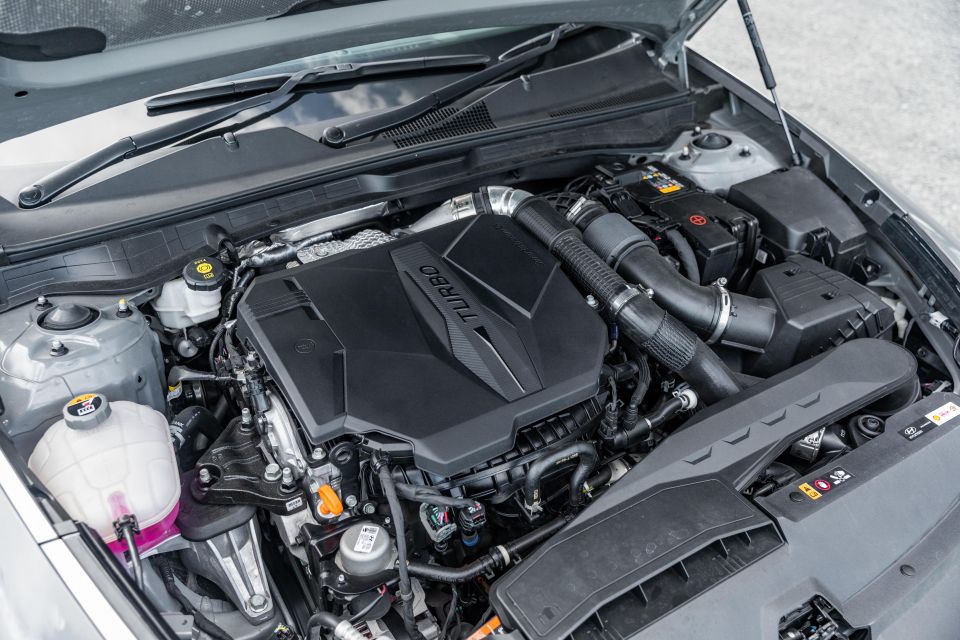
The Sonata N Line is powered by a turbocharged 2.5-litre four-cylinder petrol engine producing 213kW of power and 422Nm of torque, sent to the front wheels via an eight-speed wet-type dual-clutch automatic transmission.
The DCT features rev-matching for downshifts, while the Sonata also offers launch control and N Power Shift. The latter increases the throttle opening during upshifts in Sport and Sport+ modes.
The Sonata’s outputs put it significantly ahead of the Mazda 6 in power, if only narrowly ahead in torque (170kW/420Nm), and also put it ahead of the Octavia RS (180kW/370Nm).
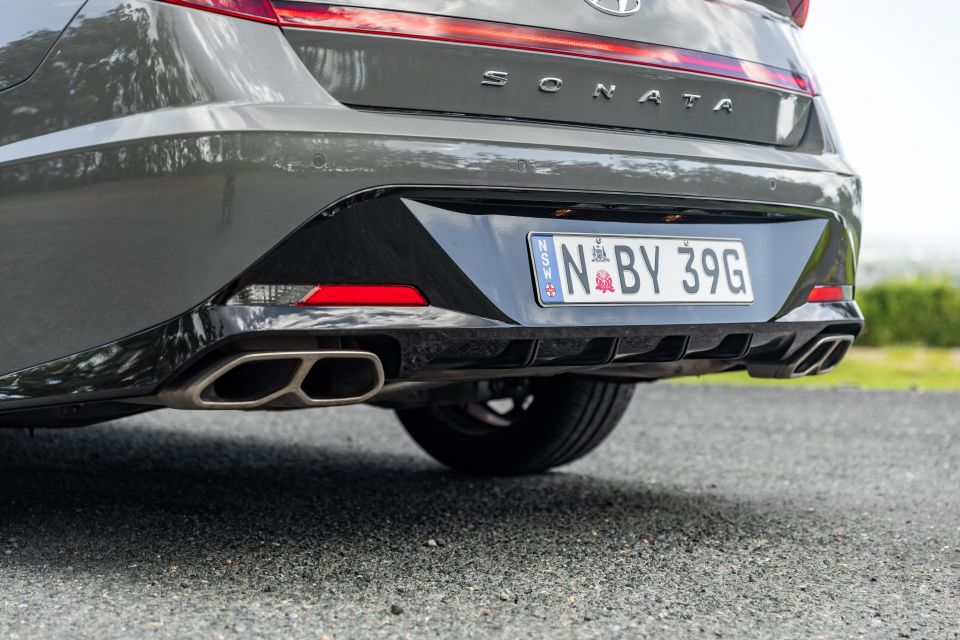
Hyundai claims a 0-100km/h time of 6.2 seconds, and combined cycle fuel consumption of 8.1L/100km.
Over a mix of inner-city, suburban and highway driving, we averaged 9L/100km. Over the course of a week, this increased to 10.9L/100km, albeit with some spirited driving during that time.
The Sonata will happily run on more affordable 91 RON regular unleaded.
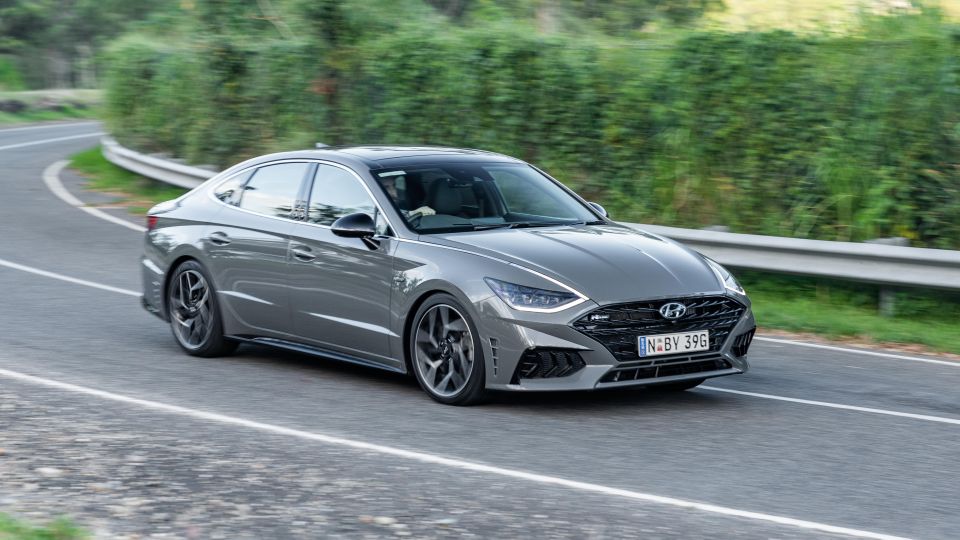
Full disclosure, most of the cars I’ve owned have been large sedans, and all of those have been rear-wheel drive. I wouldn’t go so far as to say I’m a rear-wheel drive snob, but it’s my preference.
You might be thinking, as I was, that 213kW and 422Nm is a lot for a front-wheel drive, mid-sized sedan. You’d be right, but the Sonata is still a lot of fun.
Its strongest attribute is its terrific powertrain. This is the engine that should be powering entry-level Genesis G70s, and Kia should absolutely be selling the Stinger with this engine as it does in markets like South Korea and the US.
In the Sonata, the turbocharged 2.5-litre four and the eight-speed dual-clutch transmission go together superbly. The engine is utterly effortless, and there’s less of a delay off the line than in the G70’s 2.0-litre – it’s remarkable how much better this engine feels.
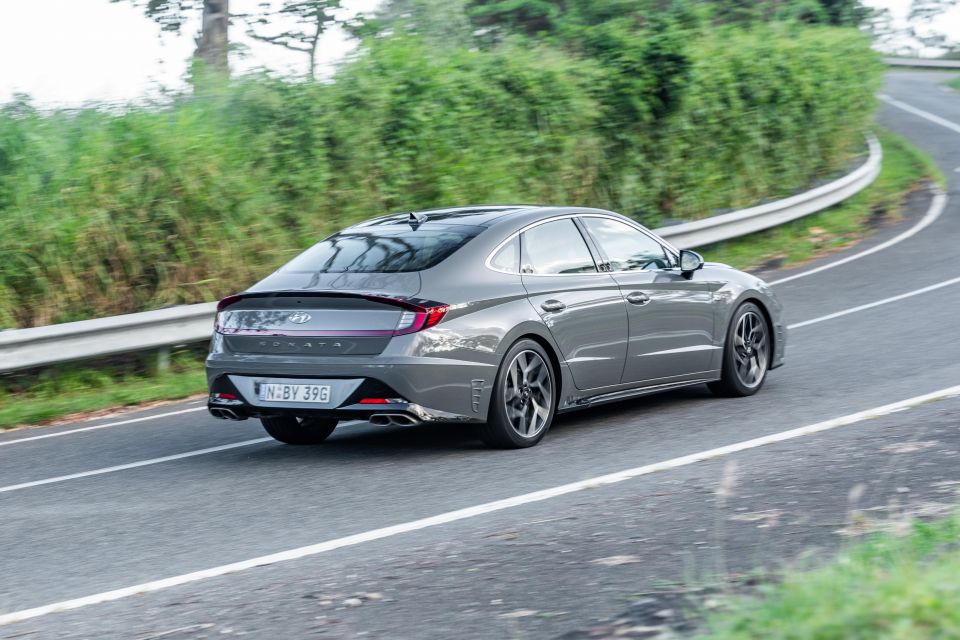
It’s helped by a snappy wet dual-clutch transmission, which can also be found in the i30 N and Kona N, that shifts smoothly and rapidly. There is some of that trademark dual-clutch vibration when slowing to a stop or taking off from a standstill, but there’s no annoying hesitation.
It’s much smoother than Hyundai’s seven-speed dry dual-clutch and, while there are paddle shifters, we never felt the need to use them.
What delights the most about the Sonata’s engine is how much torque is available down low – peak torque is available from 1650 to 4000rpm – and how flexible and powerful the engine is overall.
Yes, there is torque steer, plus the other foibles that come with powerful front-wheel drive vehicles. Punch it from a stop and you will feel the steering wheel tug slightly to one side. Power out of a corner and you’ll occasionally hear the tyres chirp. Lay on the accelerator and you’ll sometimes feel the front tyres almost squirming as they try to get the power to the ground.
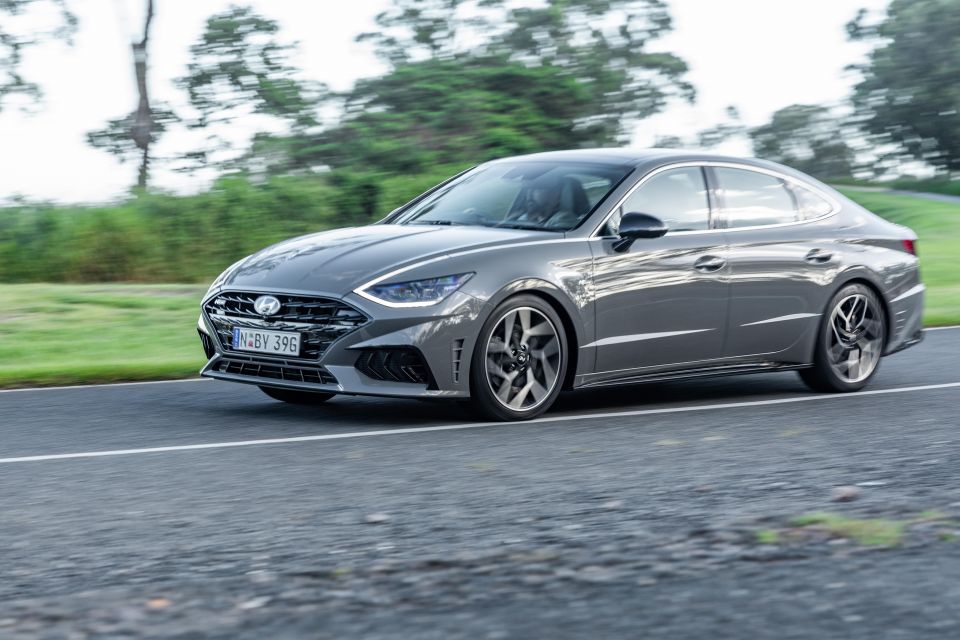
Accidentally knock it into Sport+ mode, as we did on one occasion, and you’ll deactivate the traction control. With it deactivated, a heavy throttle application from a standstill results in an alarming amount of wheel hop.
Of course, in any other drive mode – with the traction control turned on, as we recommend it should be – the worst you’ll have to contend with is some mild torque steer. It’s worth noting that, unlike the i30 Sedan N, there’s no front limited-slip differential.
There are Normal, Sport and Sport+ modes, plus a customisable mode called – you guessed it – Custom. There isn’t, however, an Eco mode as in many Hyundais.
In spirited driving over winding roads, you’ll experience some understeer as you push it into corners. But, overall, the Sonata N Line seems to enjoy being pushed.
Turn-in is sharp, its steering is well-weighted even in Normal mode, and body roll is virtually non-existent. It stays hunkered down and, while it’s not quite track-ready, it’s an enjoyable steer. There’s good grip from the Continental Premium Contact 6 tyres, too.
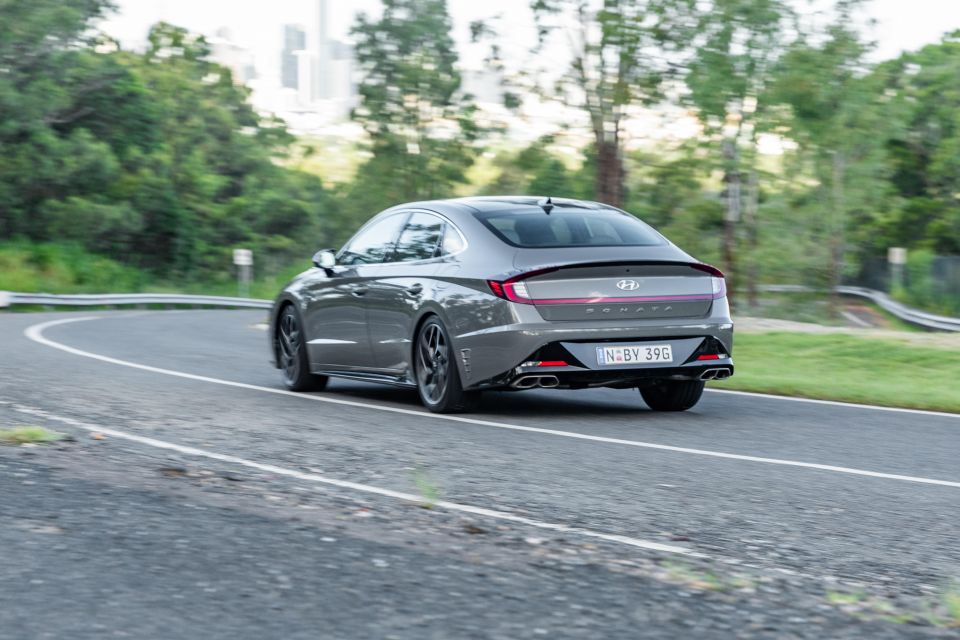
Where it’s let down is in ride quality. Over most surfaces, it’s fine – firm, but composed. On patchier roads it starts to get a bit busy, while on any road that isn’t glass-smooth you’ll occasionally notice its damping needs some work.
There’s a crashy feeling to the way it tackles some bumps and ruts, and the suspension doesn’t feel like it has quite the same amount of finesse as Hyundai’s N cars. Mind you, over most surfaces it avoids feeling brittle.
Some of Hyundai’s four-cylinder engines can sound uninspiring but the Sonata’s, while not quite a symphony, sounds decent. It sounds even better to my ears with the artificial ‘Active Sound Design’ pumped up to its highest level, giving the Sonata’s score a little body.
As in most Hyundai’s, the suite of active safety and driver assist technology works well. Hyundai’s Lane Following Assist, in conjunction with adaptive cruise control, makes highway driving a breeze. The lane-keep assist is a bit more assertive than most, while the Blind Spot View Monitor is a terrific idea.
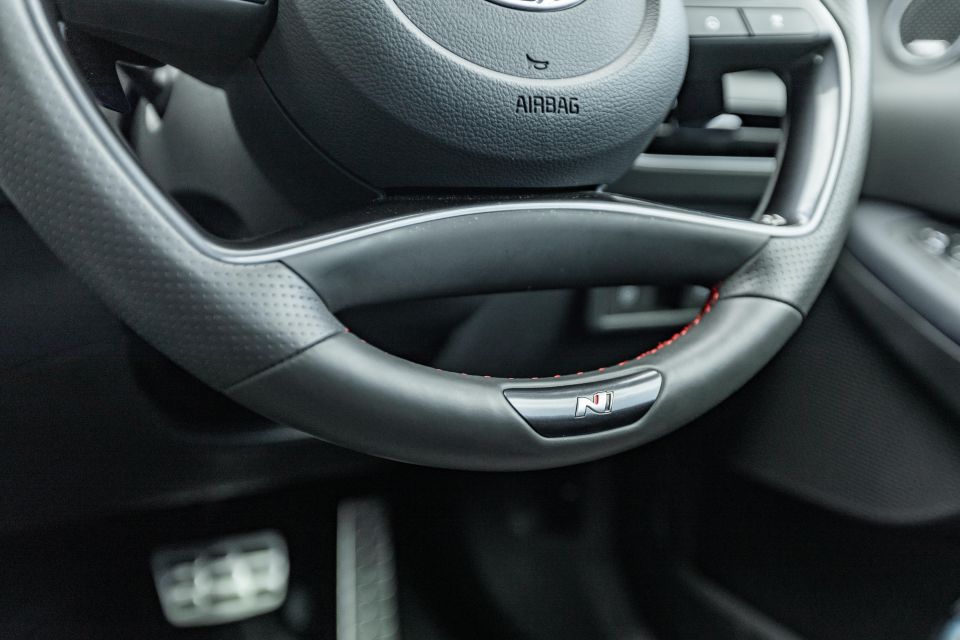
The Sonata is covered by a five-year, unlimited-kilometre warranty. Hyundai also offers capped-price servicing, with the first six services priced at $350 each.
Servicing intervals are every 12 months or 10,000km. In terms of pricing and intervals, the Sonata is quite close to the Mazda 6.
The Octavia RS has longer intervals (12 months/15,000km) and works out to be slightly cheaper to service if you buy a prepaid service pack. For example, with the five-year pack it works out to be an average of $310 per service.
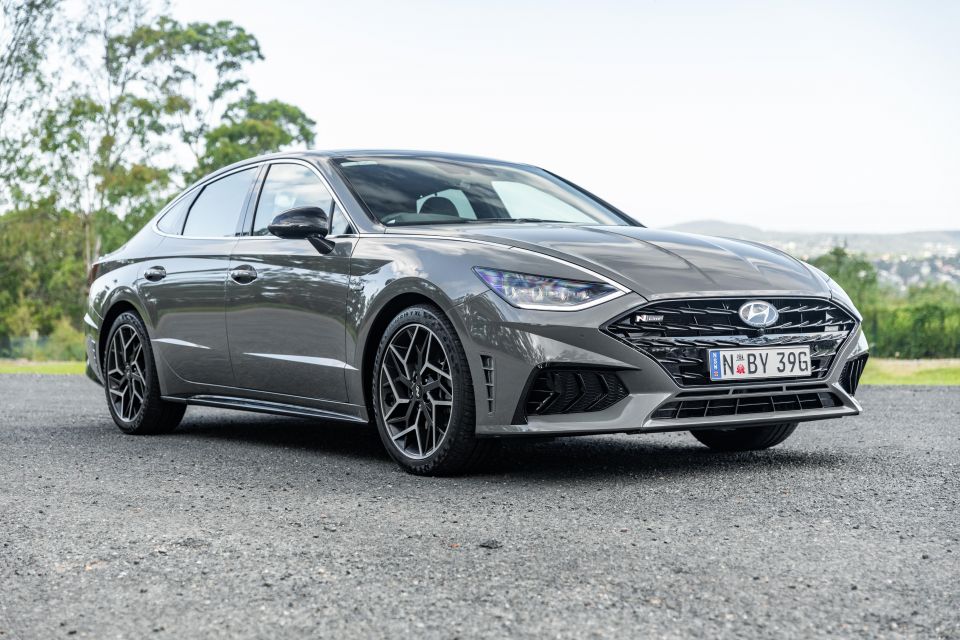
Buy your new car without the stress. It's fast, simple and completely free.

Great service from Travis and team, second time I have used this business would not hesitate to recommend them to anyone
Craig C.
Purchased a Ford Ranger in Sunshine Coast, QLD
CarExpert helped Craig save $7,224 on his Ford Ranger, now let us save you on your next new car.
Get your BEST priceIt makes sense why Hyundai ultimately chose to bring the Sonata here only in high-zoot N Line guise.
With the latest generation, practicality has been sacrificed on the altar of style. There’s scarcely more room than an i30 Sedan inside, and in at least one dimension there’s actually less.
But given the Sonata’s role as a high-performance flagship sedan of sorts for the Hyundai brand, these faults are almost excusable (unless you’re very tall). The car looks fantastic, even with its fake air vents and tail light ribs.
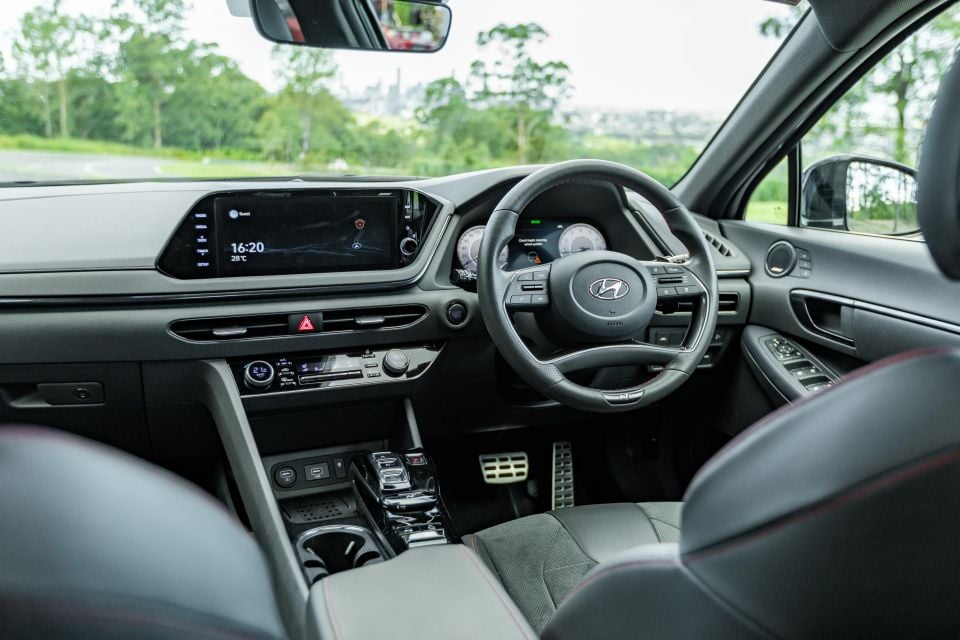
The sleek roofline gives the Sonata coupe-like look, while the detailing is fascinating – in particular, I love the chrome-look strip along the bonnet that seamlessly transitions into the daytime running lights. The Sonata stands out, and I got more stares driving this than any other mid-sized sedan.
The Sonata also has the performance to back up its sporty looks, with a punchy turbocharged engine and a slick-shifting dual-clutch transmission. There’s a lot of power for a front-wheel drive sedan, and yet the Sonata is quite fun to drive. It’s only let down by a somewhat underdamped ride.
While we’re carping, there are also some features missing from the Sonata that you can get in other markets, like Remote Smart Parking Assist.
Nevertheless, this is a striking mid-sized sedan with performance in spades and an equipment list as long as your arm. There might be a limited market for this kind of car nowadays, but if you’re not on the SUV train yet and you’re not too tall, it’s definitely worth a drive.
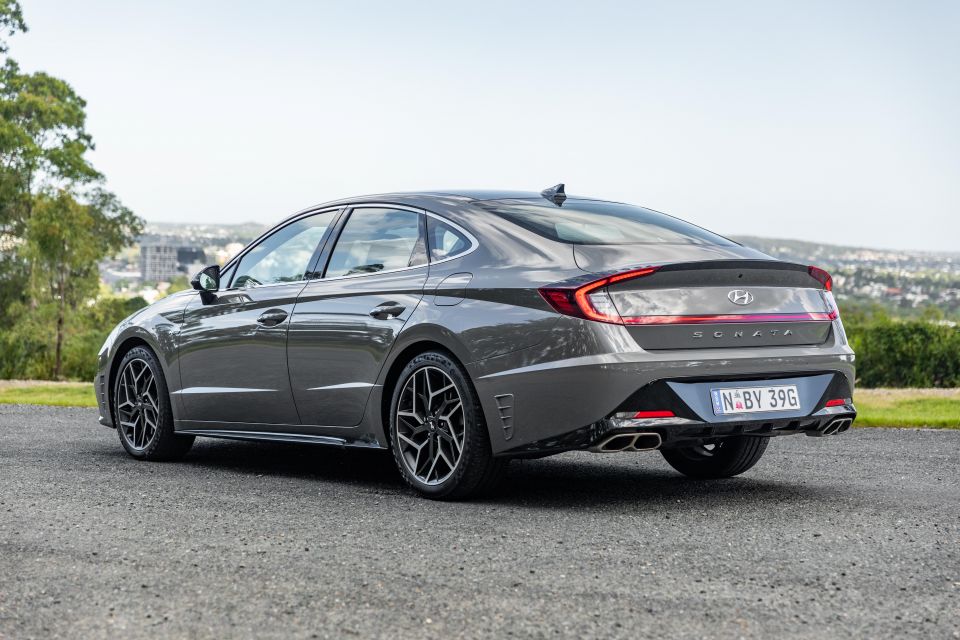
Click the images for the full gallery
Where expert car reviews meet expert car buying – CarExpert gives you trusted advice, personalised service and real savings on your next new car.
William Stopford is an automotive journalist with a passion for mainstream cars, automotive history and overseas auto markets.


Alborz Fallah
7 Hours Ago
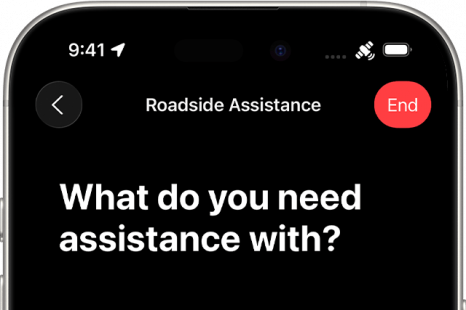

Marton Pettendy
9 Hours Ago
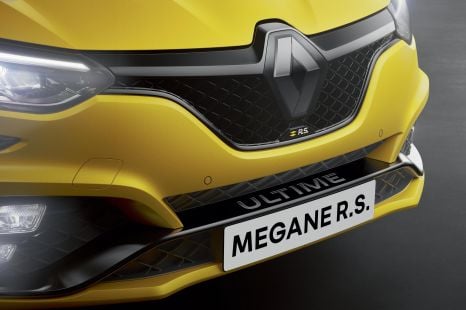
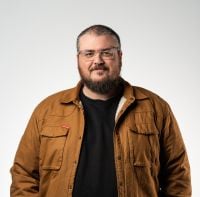
Ben Zachariah
10 Hours Ago
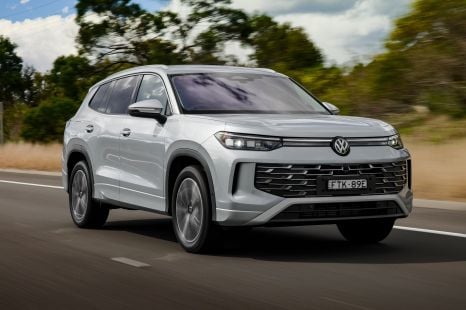

Damion Smy
11 Hours Ago
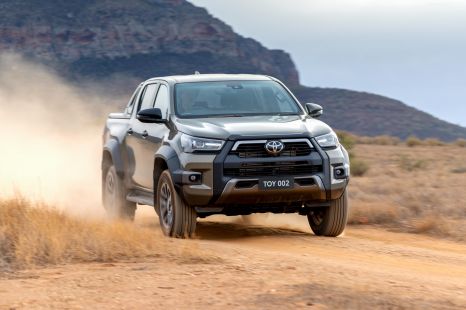

Damion Smy
12 Hours Ago
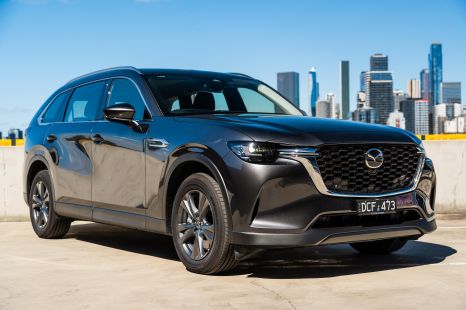

William Stopford
13 Hours Ago